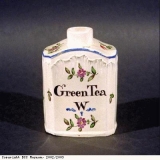Colonisation and the East India Company
The British, Portuguese and Dutch were interested in the region known as the East Indies in the Indian Ocean. They each wanted a share of the luxury goods found there and all tried to gain exclusive control over the trading to push each other out of the area. This trading competition was linked to their desire to gain political power and being able to colonise the region.
In the case of Britain, its relationship with the East Indies is tied into the history of a British trading company. This shows how closely trading and political power were linked. The company, called the East India Company, was set up by British merchants, who wanted to trade with this part of the world. They wanted to bring the luxury goods produced there ‘pepper, spices such as cloves, cinnamon and nutmeg, silks, cottons, tea and coffee’ into Europe.
Before the East India Company was set up, these luxury goods from the East Indies came to Europe in small quantities via complex trade routes. Several of the European nations were anxious to find direct routes to this treasure house of expensive trade goods. The explorer John Cabot was looking for a route to the Eastern area of the world when he set sail from Bristol in 1497. He only got as far as the east coast of North America. The Portuguese and the Spanish explored further and established small trading bases in places such as India, the east coast of Africa, the Indonesian islands, China and Japan.
In the late 16th century, the Dutch entered the East Indies trade. A trading voyage of 1595 returned with a cargo of pepper from Java (now part of Indonesia). This first voyage was followed by many others. In 1602 the merchants involved formed the Dutch United East India Company, the Vereenigde Oostindische Compagnie, known as the VOC for short. The Dutch company quickly took the leading position in the East Indies trade. Portuguese and Spanish merchants were reduced to a very minor role.
In the 1590s, the Dutch trade in the East Indies was seen as a threat to the English trade to the area. English merchants had to protect their interests, so in 1600, formed the Company of Merchants of London trading into the East Indies. It had control of all English trade in the East Indies.
The first East India Company voyage left London in 1601. The four ships on this trip returned home by 1603, with lots of pepper. Other successful voyages followed. One voyage in 1612 was so profitable that the investors in the venture got back the money they had invested in the voyage plus 220% profit.
The East India Company was trading from 1600 until 1833. It was a major commercial enterprise. The company also had a lot of political influence in the East Indies. The East India Company slowly took over India and governed it on behalf of the British government.
European nations were using their trading relations to gain advantage over each other. The Europeans took advantage of the local political instability. For example, the Dutch trading company, VOC, had control over the trade in spices from most of the Indonesian islands, by offering protection to each small state against its neighbours. The English were pushed out of the region. Eventually, they found some islands that were not under the protection of the Dutch and therefore willing to trade with non-Dutch traders.
The trade competition between the two was finally over in 1795, when the Dutch company (VOC) was dissolved. The British East India Company had only colonised a small area of the Indonesian islands, but had slowly colonised and ruled the large country of. The East India Company started by establishing a few trading bases in India (at Madras, Calcutta and Bombay) with permission from India’s ruler, the Mughal Emperor. The Emperors could order the Europeans out if they wanted to. But by the mid 18th century, the map of India was changing. The great Mughal Empire, which had ruled over much of India, was split into smaller states and European trading companies sided with the smaller, weaker states. Gradually, the East India Company took over, setting up and removing kings and taking control of much of the continent of India.
The East India Company lost most of its powerful trading position in 1813. It was left only with control over British trade with China. The East India Company began to use the drug opium as a good with which to barter for the goods it was buying in China. The opium was grown in India and smuggled into China by middlemen. The Emperor of China had banned the import of opium. By selling the opium to the smugglers, the East India Company kept the company image clean (because they were not seen to be selling it). Opium was smoked in pipes. By the early 19th century, the tea that was bought for the British market from Chinese merchants was paid for not with silver, but mainly with opium. When China tried to stop the Opium from coming into their country, it led to a war between China and Britain in 1839. China was defeated and forced to allow more trade with Britain. Tea, when first introduced into Britain was an expensive luxury item. It was stored in containers called ‘tea caddies’, like the one pictured here, which were often kept under lock and key.
The control over trade with China was ended in 1833. Eventually, the East India Company came to an end in 1858 after 231 years of trade, government and political manoeuvring.



